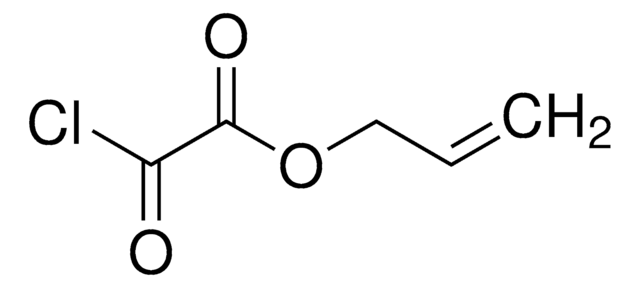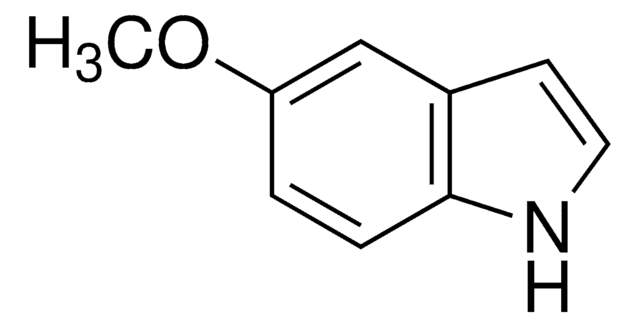221015
Oxalyl chloride
ReagentPlus®, ≥99%
Sinonimo/i:
Ethanedioyl dichloride
About This Item
Prodotti consigliati
Densità del vapore
4.4 (vs air)
Livello qualitativo
Tensione di vapore
150 mmHg ( 20 °C)
Nome Commerciale
ReagentPlus®
Saggio
≥99%
Stato
liquid
Impiego in reazioni chimiche
reagent type: oxidant
Impurezze
<10 ppb Heavy metals
Colore
APHA: 0-150
Indice di rifrazione
n20/D 1.429 (lit.)
P. ebollizione
62-65 °C (lit.)
Punto di fusione
−10-−8 °C (lit.)
Densità
1.5 g/mL at 20 °C (lit.)
Gruppo funzionale
acyl chloride
Stringa SMILE
ClC(=O)C(Cl)=O
InChI
1S/C2Cl2O2/c3-1(5)2(4)6
CTSLXHKWHWQRSH-UHFFFAOYSA-N
Cerchi prodotti simili? Visita Guida al confronto tra prodotti
Categorie correlate
Descrizione generale
Applicazioni
- Preparation of Mosher′s acid chloride by reacting with Mosher′s acid in the presence of DMF.
- Activation of dimethyl sulfoxide for use in the oxidation of long-chain alcohols to carbonyls.
- Activation of α-keto carboxylic acids and N-heterocyclic carboxylic acids for alkynylation to form ynediones and N-heterocyclic ynones, respectively.
- Synthesis of N-heterocyclic ynones and ynediones, used to activate carboxylic acids
- Chlorination and halogenation
- Three-component [3+2] cycloadditions
- Reactions with organostannanes
- Synthesis of cyclopentenones
- Carbonylations, used as a carbonyl synthon
Confezionamento
Note legali
Accessorio
Avvertenze
Danger
Indicazioni di pericolo
Classi di pericolo
Acute Tox. 3 Inhalation - Acute Tox. 3 Oral - Eye Dam. 1 - Flam. Liq. 2 - Skin Corr. 1B - Water-react 1
Rischi supp
Codice della classe di stoccaggio
4.3 - Hazardous materials which set free flammable gases upon contact with water
Classe di pericolosità dell'acqua (WGK)
WGK 1
Punto d’infiammabilità (°F)
51.8 °F - closed cup
Punto d’infiammabilità (°C)
11.0 °C - closed cup
Dispositivi di protezione individuale
Faceshields, Gloves, Goggles
Scegli una delle versioni più recenti:
Possiedi già questo prodotto?
I documenti relativi ai prodotti acquistati recentemente sono disponibili nell’Archivio dei documenti.
I clienti hanno visto anche
Il team dei nostri ricercatori vanta grande esperienza in tutte le aree della ricerca quali Life Science, scienza dei materiali, sintesi chimica, cromatografia, discipline analitiche, ecc..
Contatta l'Assistenza Tecnica.











